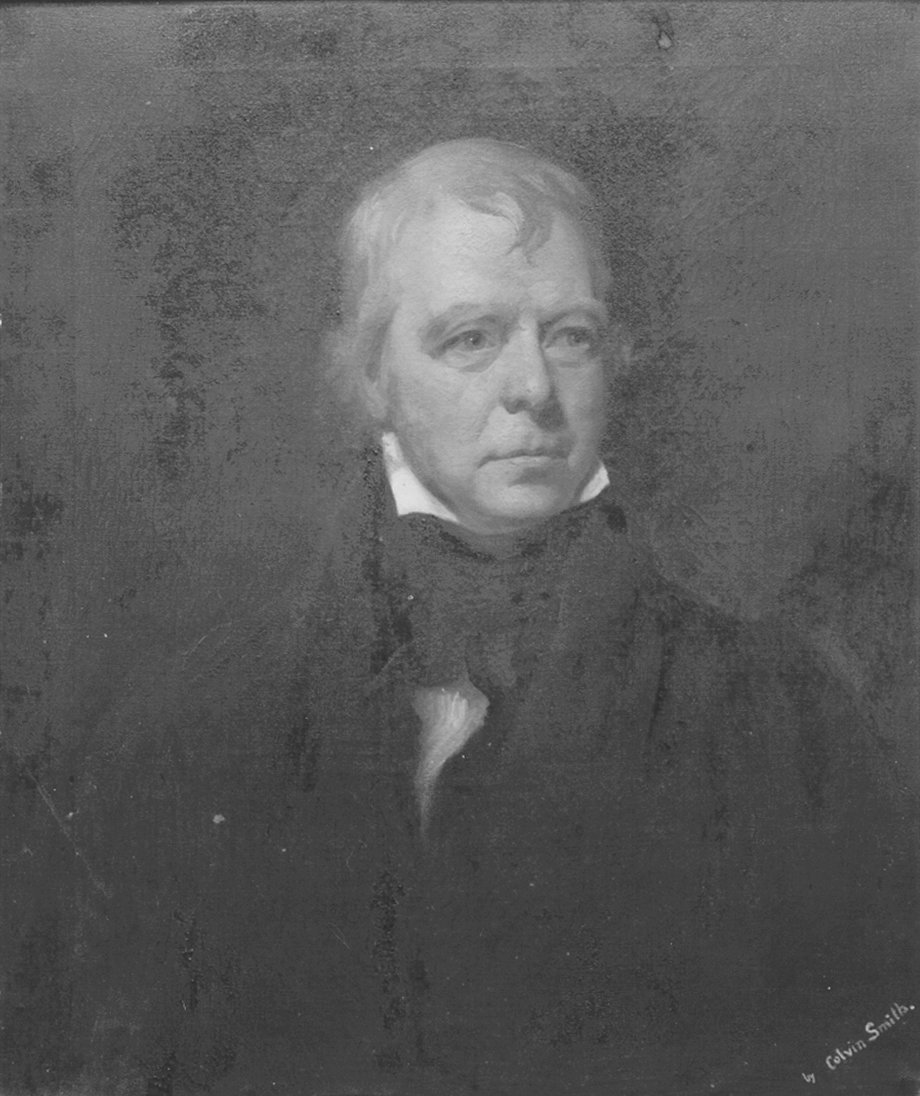In this portrait, as in many others, Scott’s intense gaze and dishevelled hair play up to his image of the romantic and creatively driven writer. Scott himself acknowledged that the artist, Colvin Smith, had captured his likeness, but was also critical of his work. Referring to an earlier version of this portrait he wrote: ‘My own portrait is like but I think too broad about the jowls, a fault [painters] fall into I suppose, by placing their subject on the high stage and looking up at them, which foreshortens the face’. Scott first won fame for his romantic poems set in earlier centuries, particularly The Lay of the Last Minstrel (1805) and The Lady of the Lake (1810). He started another even more successful career with his first novel, Waverley, published anonymously in 1814. This and its immediate successors, such as The Heart of Midlothian (1818), were set in Scotland in the seventeenth and eighteenth centuries. With Ivanhoe (1819) he moved not only to an English subject but to the Middle Ages, a period with which readers increasingly associated him. This portrait was once in the collection of Mrs Mary Anne Hughes (née Watts; c.1770-1853) of Uffington, Oxfordshire (formerly within Berkshire), who wrote 'Letters and Recollections of Sir Walter Scott' (published in 1904). In 1828 Mary’s husband, Reverend Dr Thomas Hughes, Canon of St Paul’s and Vicar of Uffington, purchased the portrait from the artist, Colvin Smith. Thomas then commissioned a further version from the artist, to present to Dr Copleston, Bishop of Llandaff. Smith’s earliest version of the work was also painted in 1828, commissioned by Lord Chief-Commissioner William Adam.
